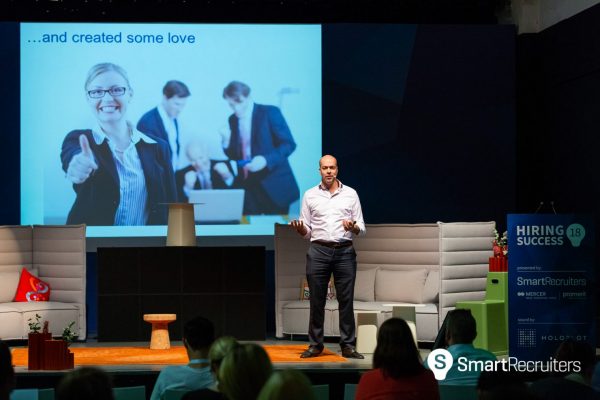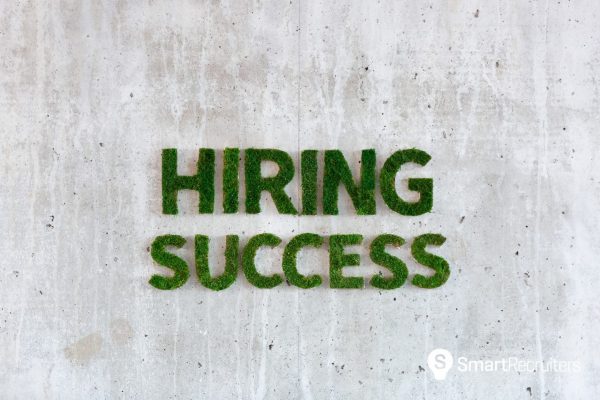Learn with the self-proclaimed “dataholic’ how to build trust with the C-suite.
Meet Peter Hetherington, the Recruitment Director at Link Asset Services and a self-proclaimed ‘dataholic’. Peter is known to say he’d choose good data over employer brand any day. Though he acknowledges both are ultimately necessary. “Data is foundational to success,” he remarks, “and no amount of tinkering with interesting things like employer brand will make up for missing or inaccurate management information.”
Link Asset service left Capita almost two years ago. This acquisition meant separating from a company of 70 thousand to operate as a three-thousand person entity within the new organization. Peter started from square one at his new employer. He was a team of one, with no tools but his email. His sole focus in those first weeks was to build out his team – people needed to be hired and fast.
Peter set to work hiring a stellar team, most of whom are with him to this day. His second order of business was to implement an applicant tracking system (ATS). He chose SmartRecruiters Talent Acquisition Suite (TAS), and – in just four weeks – the system was running and Peter was collecting data.
Data is, was, and will always be a must for Peter, and here’s why: Data transforms managers into leaders, improves the quality of conversations, enables him to question conventional wisdom, and allows his team to learn from the past to predict the future.
Overall, it helps him see what’s happening, form a plan, and sell that plan to internal stakeholders. Yet, even when the data is there, it can be a challenge to organize it in a way that speaks to your leadership. The term ‘the board’ makes this committee seem like a homogenous mass, when really it’s comprised of many parts, each with unique objectives, concerns, and insights.
The CEO has an eye for expansion and growth, the CFO is concerned with wise spend, and bottom-line targets… the list goes on. Peter takes us through the top five points your data should address, in order to align executives with hiring success.
Watch Peter’s presentation from Hiring Success 18 – Berlin below, and be sure to register for Hiring Success 19 – San Francisco for more great content like this live!

1)
Governance
Recruiting is critical to the development of an organization. So, the way your team manages the “floodgates” is all-important. Leadership needs to know your TA strategy promotes the desired organizational structure.
2)
Management Information
Who doesn’t love a good dashboard? Use your data to build dashboards so your leadership can easily view your department performance in real time.
3)
ROI
Return on investment is an obvious metric to include when presenting the board, though it can be hard to demonstrate in a palpable way. Remember to frame everything as an investment (because it is), not a cost. Use your past data to justify future investment. How many more hires were you able to make after expanding your team? Use that info to demonstrate why you want another recruiter on board.
4)
Process Excellence
Showcase the excellence of your team, including their ability to hit targets and communicate with other departments.
5)
Forecasting
Share your projections of who you need to hire and how you arrived at that conclusion – again, using your data. Then give some context as to whether the market can supply that need and the amount of resources your team will require to reach that goal.

Case Studies
Organizational Structure
Link went from a large company to a much smaller and more agile organization. The leadership of this new Link iteration wanted to make sure that each new hire was strategic, thoughtful, and fed into the new management structure they had laid out for their company. One of their main targets was to ensure managers only oversaw 3-10 people directly – any less or more found to be ineffective for the business needs.
To support this management initiative, Peter and his team implemented conditional fields to alert when a hiring manager opened a new role in the SmartRecruiters system. The system would ask how many people the new role managed, and if the number was outside the ideal window the hiring manager would be asked to provide a business case to justify their decision.
Before these conditional fields, hiring teams would reach offer stage only to have the scope of the role called into question and, at times, would have to start from scratch with a modified version of the role. This small tweak of adding conditional fields ensured the board that proper governance was in place to make smart hires in line with business objectives.
Resource Allocation
Another aspect of their organizational restructuring was reallocating office resources. Leadership wanted to encourage collaboration through open offices, and move more workers to their suburban campus as opposed to their city campus, in response to Dublin’s skyrocketing rents.
Employing the same tactic of conditional fields, hiring managers were asked where new roles would be located. If the job was located in Dublin, hiring managers were then asked to present a business case for hiring an employee there. The hiring team could then immediately forward these requests to the right people to approve.
Now, candidates aren’t surprised by a sudden change in job location, and the leadership knows that the hiring team is helping the meet the company ’s fiscal goals.
Contractors
Contract workers are often the highest uncontrolled spend for businesses. Hiring managers often prefer using a contractor over hiring a full-time employee, as the latter takes much more time and effort to source and onboard.
To ensure that hiring managers aren’t leaning on freelancers too much, Peter and his team use conditional fields once again to compare the merit of contractor versus full-time employee. Questions like, Where does this budget for this role come from? Does this position need to be interviewed? Is this a new role or an extension? and, what is the equivalent salary of a permanent person?, helped the TA team manage the company’s contingent workforce with greater efficiency and prudence.
Facility Management
What’s worse for candidate experience than arriving for the first day of the job only have no desk, no chair, and no laptop. Most people have seen this situation at least once in their company and aren’t keen to repeat it.
With larger organizations, these small details can fall through the cracks. That’s why the TA team at Link makes hiring managers think about supplies beforehand. As part of a new req the hiring manager must submit supply requests. The hiring team then sends facilities a weekly report with the needs of the new hires, instead of frantic managers calling daily.





